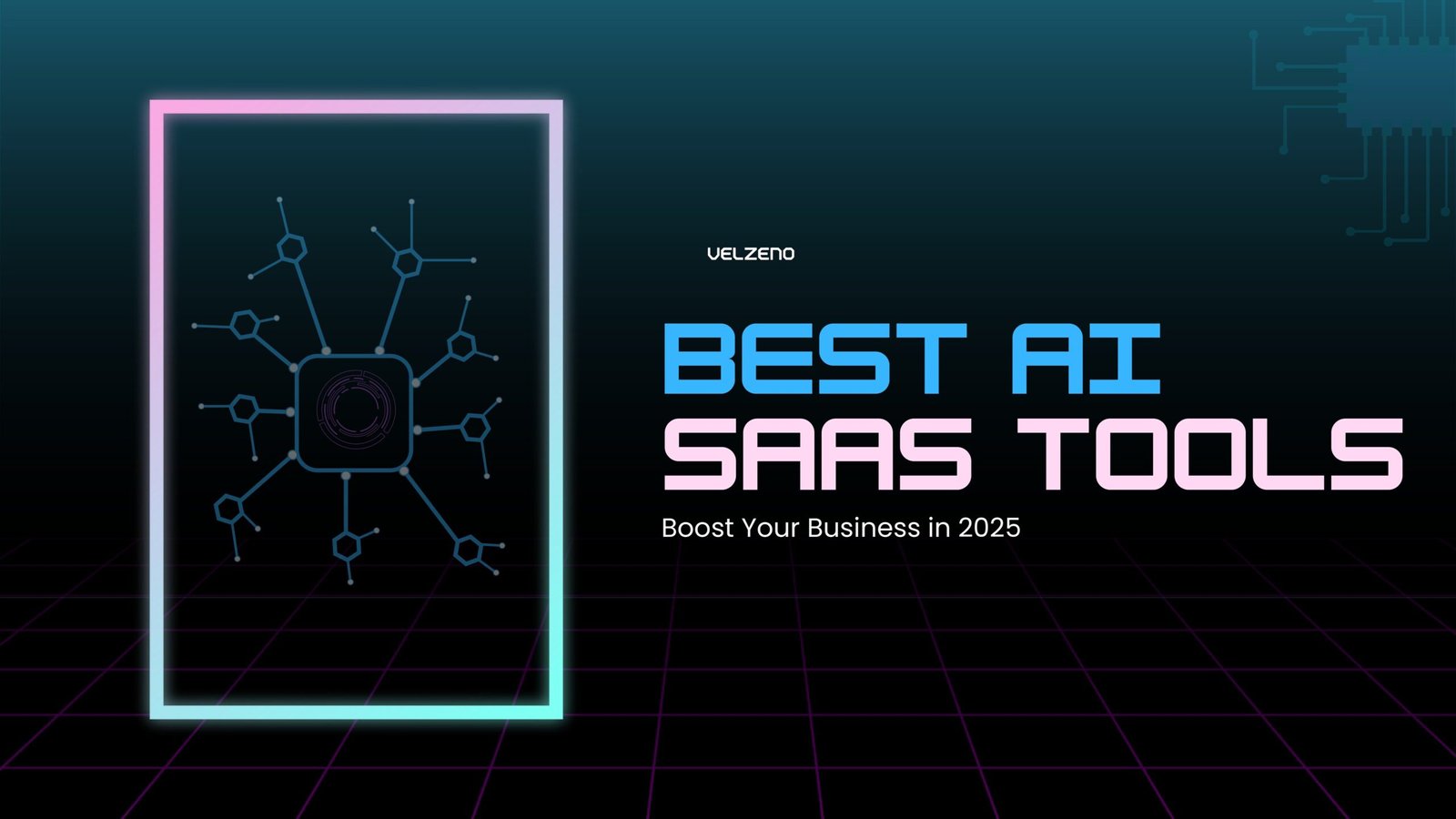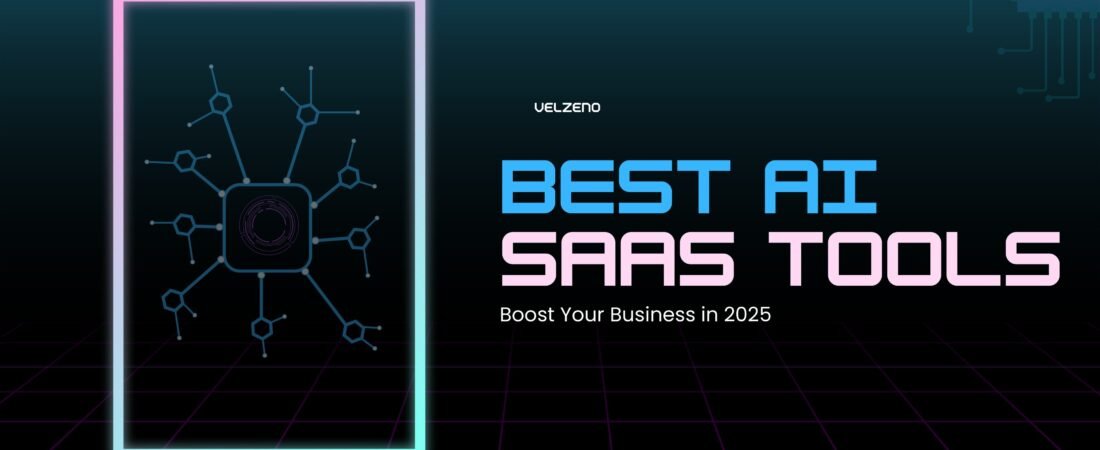
7 Best AI-Powered SaaS Tools to Boost Your Business in 2025
Introduction: Why I Tested AI-Powered SaaS Tools in 2025
In 2023, my team and I used dozens of SaaS apps, but most felt like just tools. They helped us stay organized, but they didn’t really “think” for us.
By 2025, everything changed. SaaS platforms are no longer just passive tools; they’re powered by AI agents that automate workflows, generate content, and even make recommendations based on real data.
I decided to test the top AI-powered SaaS tools of 2025 for my own business. The goal was simple: find which ones delivered measurable productivity gains, cost savings, and smarter automation.
Here’s my breakdown of the best options I tested, how they performed, and who they’re best for.
1. Hostinger Horizons – AI App Builder for Non-Tech Founders
When I tested Hostinger Horizons, I was impressed by how quickly I could build a working app without writing a single line of code.
-
What I Built: I created a simple AI-powered booking app for a friend’s salon in under 30 minutes.
-
AI Features: It auto-generated the app layout, added scheduling logic, and even suggested database fields.
-
Why It Matters: Non-technical founders can now launch SaaS-like apps without spending $20k+ on developers.
Pros:
-
No coding required
-
Fast setup with AI-generated templates
-
Affordable pricing compared to traditional dev costs
Cons:
-
Limited advanced customization for enterprise apps
Best For: Entrepreneurs, startups, and small businesses wanting to launch apps quickly.
2. Jasper AI – Content Creation Supercharged
I’ve used Jasper since 2022, but in 2025, it’s smarter and more context-aware.
-
What I Tested: Blog posts, ad copy, and LinkedIn posts.
-
AI Features: Jasper remembers brand tone, rewrites for SEO, and generates campaign-ready content.
-
Result: I cut content production time by 60%.
Pros:
-
Great for long-form + marketing content
-
Strong SEO integrations
-
Saves hours for content teams
Cons:
-
Can still produce generic output if prompts aren’t specific
Best For: Marketers, content creators, and SaaS founders scaling content.
3. ClickUp AI – Project Management with Intelligence
I integrated ClickUp AI into my team’s workflow, and the difference was night and day.
-
AI Features I Loved: Auto-summarizing project updates, generating task descriptions, and predicting workload bottlenecks.
-
Impact: Meetings were shorter because ClickUp already gave us actionable updates.
Pros:
-
Combines task management + AI assistance
-
Saves time on writing tasks and updates
-
Affordable for teams
Cons:
-
Learning curve for new users
Best For: Teams needing both structure and smart insights.
4. Notion AI – My Second Brain in 2025
I used Notion AI to manage my knowledge base and client documentation.
-
AI Features: Automatic meeting note summarization, content drafting, and connecting ideas across different workspaces.
-
Outcome: I spent less time searching for info and more time executing.
Pros:
-
Flexible and powerful for personal + team use
-
Great note summarization
-
Works across multiple workflows
Cons:
-
Can feel overwhelming for beginners
Best For: Knowledge workers, startups, and creators managing multiple projects.
5. Grammarly – Smarter Writing Assistance
I tested Grammarly for emails, proposals, and content edits.
-
AI Features: Rewrites emails in different tones, shortens/expands text, and suggests clarity improvements.
-
Impact: Saved me from embarrassing typos and made my communication more professional.
Pros:
-
Works across apps (email, docs, web)
-
Improves clarity + tone
-
Fast and lightweight
Cons:
-
Advanced features are locked behind the premium plan
Best For: Professionals, students, and business owners improving communication.
6. Zapier AI – Automation Without Thinking Twice
Zapier has always been my go-to for automation, but with AI in 2025, it’s more intuitive.
-
AI Features: Instead of manually creating “Zaps,” I could just describe my workflow in plain English, and Zapier built it.
-
Example: I said, “When a new lead fills out my site form, add them to CRM, send a Slack alert, and trigger a welcome email.” Zapier created the entire flow.
Pros:
-
Natural language workflow creation
-
Works with 5,000+ apps
-
Saves tons of setup time
Cons:
-
It can get expensive at higher usage tiers
Best For: Teams automating repetitive workflows.
7. Copy.ai – AI for Sales & Marketing Teams
I tested Copy.ai’s AI Sales OS, and it’s now one of my favorite tools for outbound marketing.
-
What I Did: Generated cold email campaigns tailored to different industries.
-
AI Features: Personalized outreach, automatic follow-ups, and CRM syncing.
-
Results: Higher response rates than my manually written emails.
Pros:
-
Great for outbound + inbound marketing
-
Saves hours in prospecting and outreach
-
High-quality personalization
Cons:
-
Works best with high-quality data input
Best For: Sales teams, agencies, and B2B founders.
8. Time Doctor AI – Productivity Tracking That Works
Finally, I tested Time Doctor AI for tracking my team’s productivity.
-
AI Features: Instead of just logging hours, it analyzed work patterns and gave recommendations on improving efficiency.
-
Outcome: Helped me identify unnecessary meetings and boost focus time.
Pros:
-
Smarter insights than traditional time trackers
-
Helps reduce burnout
-
Great for hybrid/remote teams
Cons:
-
Can feel intrusive if not managed well
Best For: Remote teams, freelancers, and managers optimizing productivity.
The Biggest Takeaway from My Testing
In 2025, AI isn’t just an add-on; it’s the core of SaaS tools. Every tool I tested had one thing in common: they didn’t just save time, they made smarter decisions for me.
-
Hostinger Horizons: Best for building apps without coding.
-
Jasper AI: Best for content creation.
-
ClickUp AI & Notion AI: Best for team productivity.
-
Zapier AI: Best for automation.
-
Copy.ai: Best for sales outreach.
If you’re running a business in 2025, these tools aren’t “nice to have”, they’re becoming the competitive edge you can’t ignore.
FAQs About AI-Powered SaaS Tools in 2025
1. Are AI-powered SaaS tools expensive?
Most offer affordable entry plans, but costs can scale with usage. The ROI is usually worth it.
2. Do I need technical skills to use these tools?
No. Most are built with no-code interfaces and natural language prompts.
3. Can AI tools fully replace human teams?
Not entirely, they’re best for augmenting humans, not replacing them.
4. Which tool is best for startups?
Hostinger Horizons (for app building) and Jasper AI (for marketing).
5. Which AI SaaS tool saves the most time?
Zapier AI automates entire workflows without manual setup.
6. Are these tools secure?
Yes, but always review each platform’s compliance (GDPR, SOC2, etc.).
Final Verdict: The Future of SaaS Is AI-Driven
From my tests, I can confidently say: AI-powered SaaS tools in 2025 aren’t just hype, they’re transforming how businesses work.
If you want to enhance productivity, automate workflows, and cut costs, start with one or two of these tools. Within weeks, you’ll see the difference.
